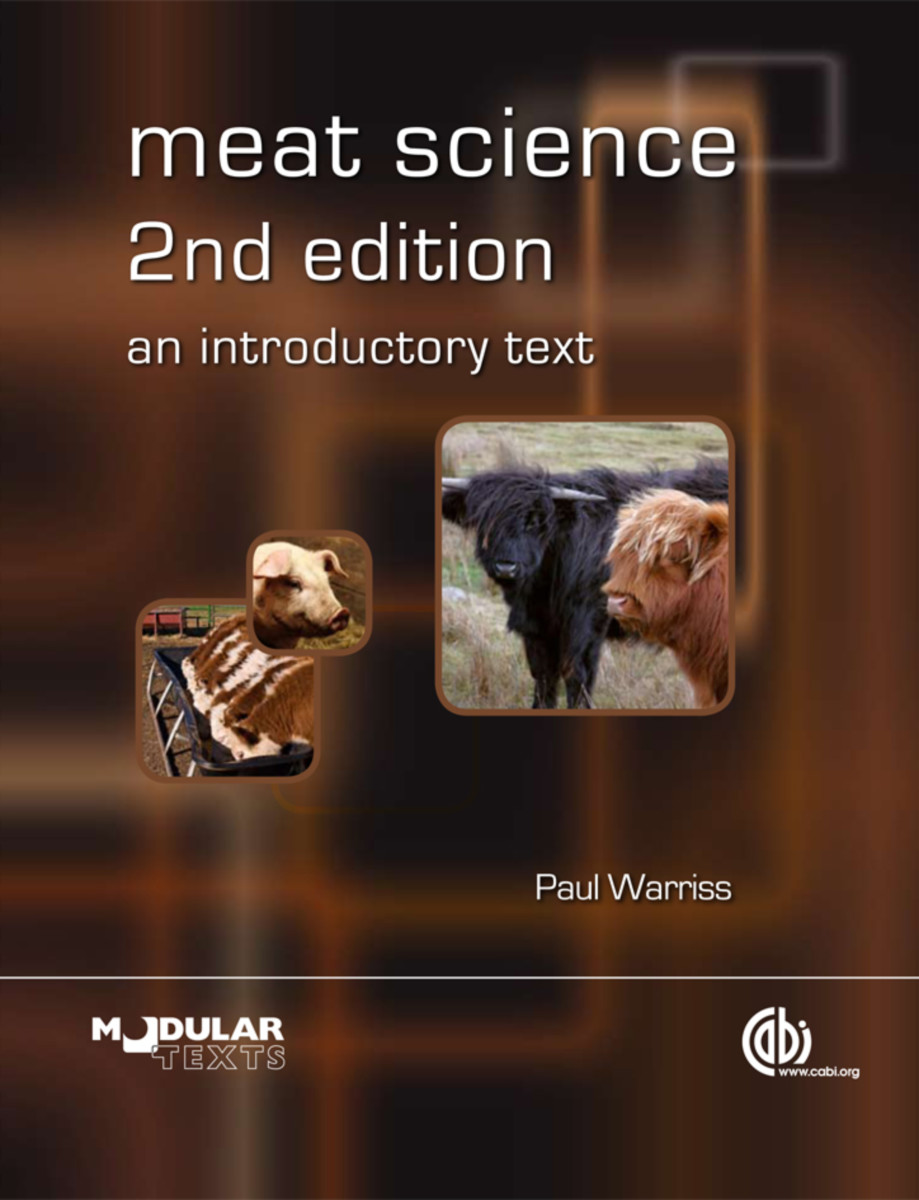- Publisher
CABI - Published
3rd March 2010 - ISBN 9781845935931
- Language English
- Pages 248 pp.
- Size 7.5" x 9.625"
- Request Exam Copy
Outlining the core principles of the subject, this introductory-level textbook covers the production of meat, its structure and chemical composition, meat quality and hygiene, and animal welfare, handling and slaughter. The new edition has been updated to cover significant advances such as the process of conditioning, leading to the tenderization of meat, and new coverage of the use of molecular genetic techniques to try to select animals for improved meat quality. It is an essential text for students and professionals in food science and technology, those working in the meat industry, meat inspectors, and vets.
* New larger format in two colors throughout
* Fully revised and updated including new coverage of genomics
* Carefully selected references and titles for further reading
"In summary, this book is a well-written introduction to a number of different aspects to meat science, where the emphasis is on meat composition, quality and hygiene, rather than on animal welfare."
Charlotte Berg, Swedish University of Agricultural Sciences - , Animal Welfare
"The text is well researched and written and contains a great deal of valuable information. It should be useful for many people in, and connected with, the meat industry as well as academics and students."
- International Journal of Food Science and Technology
"This book is excellent value for money and should be considered an essential text for students and professionals in food science and technology, those working in the meat industry, meat inspectors and all veterinarians involved with food animals."
Robert J. Huey - , Veterinary Record
"This book is excellent value for money and should be considered an essential text for students and professionals in food science and technology, those working in the meat industry, meat inspectors and all veterinarians involved with food animals."
Robert J. Huey - , Veterinary Record
1.Producing and Eating Meat, 2. The Growth and Body Composition of Animals, 3. The Chemical Composition and Structure of Meat, 4. The Slaughter of Animals, 5. Post-mortem Changes in Muscle and its Conversion into Meat, 6. Meat Quality, 7. The Effects of Live Animal Handling on Carcass and Meat Quality, 8. Post-mortem Handling of Carcasses and Meat Quality, 9. Meat Hygiene, Spoilage and Preservation, 10. Animal Welfare, 11. The Improvement of Carcass and Meat Quality by Genetic Selection, 12. Measuring the Composition and Physical Characteristics of Meat, 13. Assessing Eating Quality


